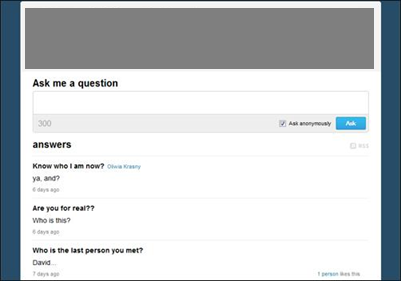The importance of safety online has never been a hotter topic, what with the recent vitriolic Twitter abuse of Labour MP, Stella Creasy, and writer and campaigner, Caroline Criado-Perez. And if adults have a hard enough time dealing with online abuse, how much worse must it be for children? Devastatingly, 14 year old Hannah Smith was the latest child to take her own life after a torrent of online bullying on popular site, Ask.fm
With 91% of 9-16 year olds having used the internet in 2012 in the UK (that’s over 7 million children) the odds are that they will discover harmful and disturbing content online, often by accident. And according to Ofcom 9% of 12 – 16 year olds have experienced cyberbullying*. It is obvious that the internet can be a harmful environment for children so how can brands do their best to ensure their safety?
Before we can answer this, we have to understand the following:
Why are children so at risk online?
Laurence Steinberg, a Temple University psychology professor, compares a teenage brain to ‘a car with a good accelerator but a weak brake. With powerful impulses under poor control, the likely result is a crash.’ A teenager’s brain is still developing and whilst it is not a lack of appreciation between right and wrong that increases their risk of harmful experiences, they have an unsophisticated sense of responsibility and likelihood to act impulsively without realizing the full extent of the consequences.
Combine this with an online environment that’s set up for perceived anonymity, immediacy, where content can remain ‘forever’ and where social currency and kudos comes in the form of how many friends you have and what brands you like, and a Lord of the Flies situation can quickly develop unless there is some way of administering order.
What are the risks children face online?
“Kids have always found ways to access content they shouldn’t see before we had digital. If my parents told me not to watch a TV channel, I would change channels while they were out of the room.”
Eric Huang – Mind Candy
Even though most children feel safer online in a space that is designed specifically for them, there is nothing more thrilling than to venture into the unknown and take risks on websites that are aimed at a more mature audience. And whilst not all risks that children take are immediately harmful, they can unwittingly make themselves vulnerable and therefore open to harm.
These risks include:
- Inappropriate contact that can unwittingly prompt abuse, exploitation or bullying
- Inappropriate exposure to unsuitable content such as sexually explicit material, racism, violence, extremism
- Accidental sharing of personal information
- Unmindful activity that can lead to hacking, illegal activity (such as downloading) or scams
- Aggressive advertising and marketing
Whose responsibility is it to keep children safe online?
Keeping children safe online is only recently making headway in being a priority on everyone’s agenda. With parents, schools, government and brands the likely choice to take responsibility, there is certainly more progress being made.
David Cameron’s new measure to block pornography in UK households unless they choose to receive it, is the latest in the government’s attempt to keep children safe online and there are also plans for schools to teach online safety to five year olds.
Parents are increasingly concerned with their children’s wellbeing online. As the home is usually the origin of their child’s first experience online, setting ground rules and education of what’s acceptable and what’s not is imperative. There are many organisations at the heart of child welfare who have identified this need and provide free advice for parents about their children’s online experiences. For example, CEOP (Child Exploitation and Online Protection Centre), the NSPCC and Get Safe Online.
Undoubtedly, it’s fair to say that those brands that have a dedicated online experience for children are the strongest in ensuring their audience are housed within a safe and trusted environment. Sites such as these include Club Penguin, Moshi Monsters and educational / learning communities such as ChildLine. It is perhaps other websites with an older target audience and therefore perhaps less stringent child safety requirements that are falling short of their responsibility of creating a safe, secure and trusted place for children, their unanticipated users.
The main sites in the firing line for lack of safety online are currently Ask.fm, Omegle, Shapchat and Formspring. Ask.fm works off the basis that you can ‘ask’ anyone a question. What is most alarming is that users who have an account can embed the Ask.fm widget in their blog and anyone can ask a question – there’s no sign up / sign in required and users have the option to post anonymously. Formspring works off a similar mechanic and unsurprisingly has similar safety issues. Omegle, with their worrying tagline, ‘talk to strangers’ also has no sign-up requirement, and allows for text as well as unmoderated chat. They ask for an idea of your interests and if your interest doesn’t match you to anyone (ours was ‘origami’), you are randomly paired with a stranger, who in our case immediately asked an inappropriate question regarding genitalia. Worrying to say the least. , works in a slightly different way but still has a whole host of safety concerns– an account is required and this operates in a closed network of trusted ‘friends’. With every text or photo disappearing a set time after your network has viewed it, SnapChat aims to encourage users to post freely without worry that their digital footprint will be embedded online forever. However, they forgot about the phone’s functionality to screengrab…
How can brands ensure their users, children especially, are safe on their websites?
How do brands gain trust from their youth audience, keep them engaged and also safe? There needs to be freedom yet also that safety net. If brands are too relaxed, children will be more vulnerable to unsafe behavior and risks. Play it too heavy-handed and there’s the risk that their audience will seek out other places to spend their time.
Safety online for a youth audience requires the following:
Understanding the audience – tweens and teens don’t follow the general behavior that one could expect of adults online; their lack of judgement, urge to take risks and peer pressure requires additional safety nets to keep them free from harm. By appreciating how children and young adults operate and think, brands can better form a basis for their community rules and procedures.
Setting boundaries for users – clear guidelines as to what’s acceptable and what’s not can encourage a strong community of support and self-regulation, something which is often seen on Childline where users are quick to jump to other members’ defence. This also solidifies a brand’s commitment to protecting their audience online. Consistency in applying these guidelines is crucial to gaining the respect and trust of its users.
Setting procedures for moderators – a guide to when to escalate matters to higher management or an authoritative body gives moderators a clear reference to what’s acceptable, what’s not and how best to look after the community.. Thorough training for each and every moderator is vital. Even for sites that don’t deal exclusively with children, training and guidelines means that staff can deal with any issues that arise in a clear-headed and calm manner.
Adequate resource – define the risks of the community in the early planning stages as this will help inform the level of moderation resource that is required. Consider whether the content will be pre, post or reactively moderated and what form the content takes (video, image, text, audio).
Active brand presence – this is essential as it is a clear signpost that the community is being monitored and watched. This should also be seen as an opportunity to educate members on appropriate content and behaviour.
Risk management – the real dangers can often be the most unobvious ones. Think about the user experience – is your website allowing private chat, text, videos, images? What are the consequences? What are you looking out for in the content? Sites such as Chat Roulette, a self-moderated site where users randomly ‘chat’ to one another through video leave their users wide open to inadvertently sharing their location personal details, or even which school they attend.
Child protection checks for staff – if your staff are working online with potentially risk-vulnerable children then ensure child-safety is put at the core of the workplace. Ensure staff undergo the necessary security checks.
As well as parent, schools and government, it is absolutely every brand’s responsibility to ensure their users are kept safe online. It isn’t good enough to pretend ignorance or react only when things go wrong, especially with all the advice that is freely available out there from sites such as Beat Bullying, CEOP and Safer Internet to name a few. Some even give training directly to businesses to ensure they are doing their bit to prevent tragedies happening. For brands looking to tighten their procedures for child-safety online, these authority sites, along with advice from any social media management agencies you may work with, are the best place to start.
*http://stakeholders.ofcom.org.uk/binaries/research/media-literacy/oct2012/main.pdf





